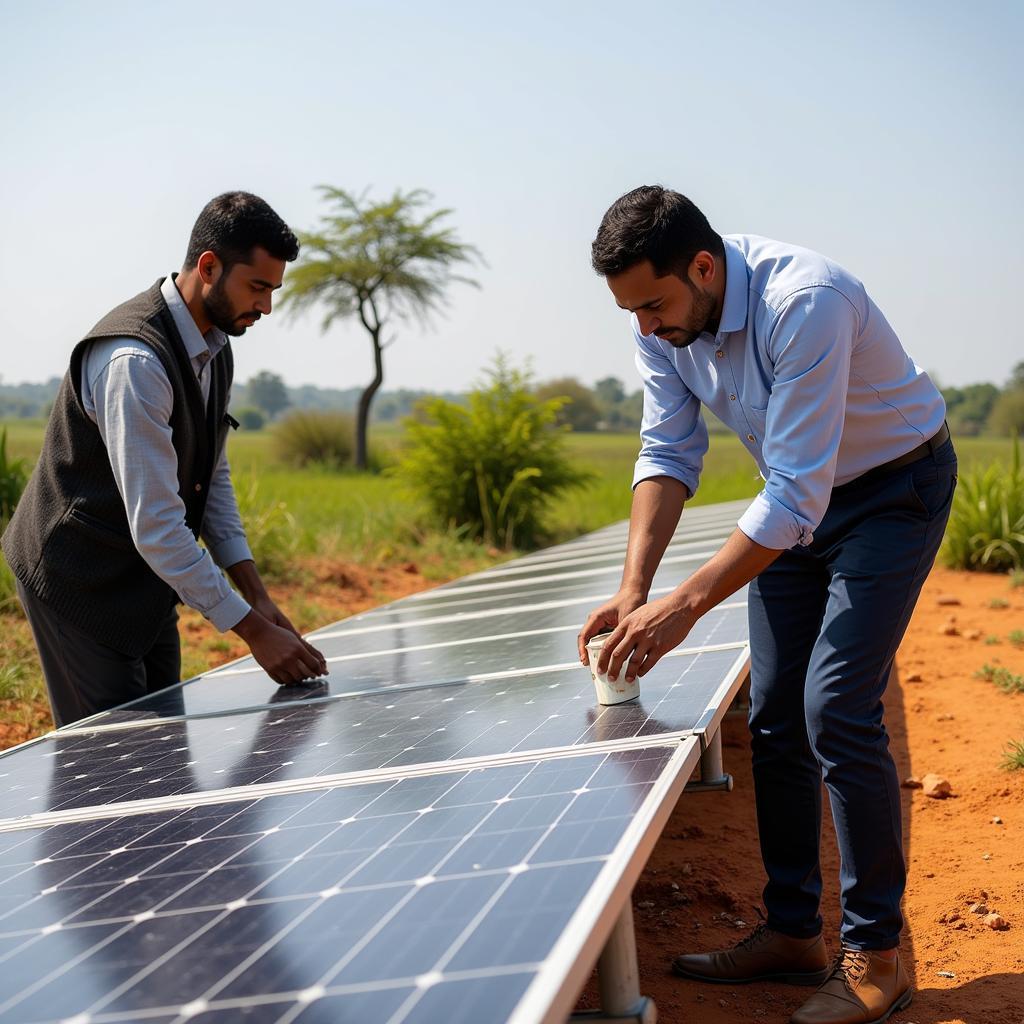African Continent Is Splitting in Two: A Geological Deep Dive
The African Continent Is Splitting In Two, a geological phenomenon that has captivated scientists and sparked curiosity worldwide. This slow but dramatic process is reshaping the Earth’s surface and offers a glimpse into the powerful forces at play beneath our feet. african continent splitting into two the hindu
Understanding the African Rift Valley
The driving force behind this continental divide is the East African Rift System (EARS), a network of valleys and volcanoes stretching over 3,000 kilometers from the Afar region in Ethiopia down to Mozambique. This rift is where the African plate is slowly tearing apart, creating a new plate boundary. The process, driven by mantle plumes rising from deep within the Earth, pushes the land apart, creating the dramatic valleys and volcanic activity we observe today. This geological activity isn’t new; it began about 30 million years ago and continues to reshape the landscape.
 East African Rift Valley: An aerial perspective of the geological wonder
East African Rift Valley: An aerial perspective of the geological wonder
The Future of the African Continent: Two Continents?
Will the African continent truly split in two? The answer is a resounding yes, though the timeline is measured in millions of years. Scientists estimate that in 5 to 10 million years, a new ocean will likely form as the rift widens and seawater floods the valley. This will effectively divide the African continent, creating a smaller continent composed of present-day Somalia and parts of Kenya, Ethiopia, and Tanzania. This new landmass is sometimes referred to as the “Somali plate” or the “Nubian plate.” african continent splitting
What Causes the African Continent to Split?
The splitting is caused by the diverging tectonic plates. As these plates move apart, magma rises to the surface, creating volcanic activity and pushing the land further apart. This geological dance is a slow but relentless process, constantly changing the face of our planet.
 Diagram of African Rift Tectonic Plates
Diagram of African Rift Tectonic Plates
Impact of the Splitting on People and Wildlife
The ongoing rifting has significant implications for the people and wildlife of East Africa. The region experiences frequent earthquakes and volcanic eruptions, posing significant risks to communities living near the rift. The changing landscape also affects wildlife migration patterns and habitats. As the continent splits, it presents both challenges and opportunities for the region.
How Will the Split Affect the People Living There?
The ongoing geological activity presents challenges such as displacement due to natural disasters and changes in land use. However, it also creates opportunities for geothermal energy production and the discovery of valuable minerals.
Dr. Anika Mohamud, a renowned geologist specializing in the East African Rift System, states, “The rifting process, while posing challenges, also provides unique opportunities for scientific research and understanding the dynamic nature of our planet.”
Witnessing Geological History in the Making
The African continent splitting is a fascinating geological event unfolding before our eyes. It’s a reminder of the immense power of Earth’s internal forces and the constant change shaping our planet. While the full extent of the split is still millions of years away, observing the current geological activity offers a unique window into the Earth’s dynamic processes. african continent splitting apart
Conclusion: The African Continent’s Evolving Landscape
The African continent is splitting in two, a testament to the powerful geological forces continually shaping our world. This slow but relentless process offers invaluable insights into the Earth’s dynamic nature. The ongoing changes will dramatically alter the geography of Africa, impacting human populations and wildlife alike as the African continent continues its dramatic transformation.
FAQs
- What is causing the African continent to split? The movement of tectonic plates is the primary cause of the split.
- How long will it take for the continent to completely split? Millions of years.
- What are the potential impacts of the split? New ocean formation, altered landscapes, impacted wildlife habitats, and geothermal energy opportunities.
- Where is the split occurring? Along the East African Rift System.
- What are the signs of the split? Volcanic activity, earthquakes, and the formation of valleys.
- Is this a unique geological event? While dramatic, continental rifting has occurred throughout Earth’s history.
- How are scientists studying this phenomenon? Through satellite imagery, geological surveys, and monitoring seismic activity.
Need support? Contact us 24/7: Phone: +255768904061, Email: kaka.mag@gmail.com, Address: Mbarali DC Mawindi, Kangaga, Tanzania.

